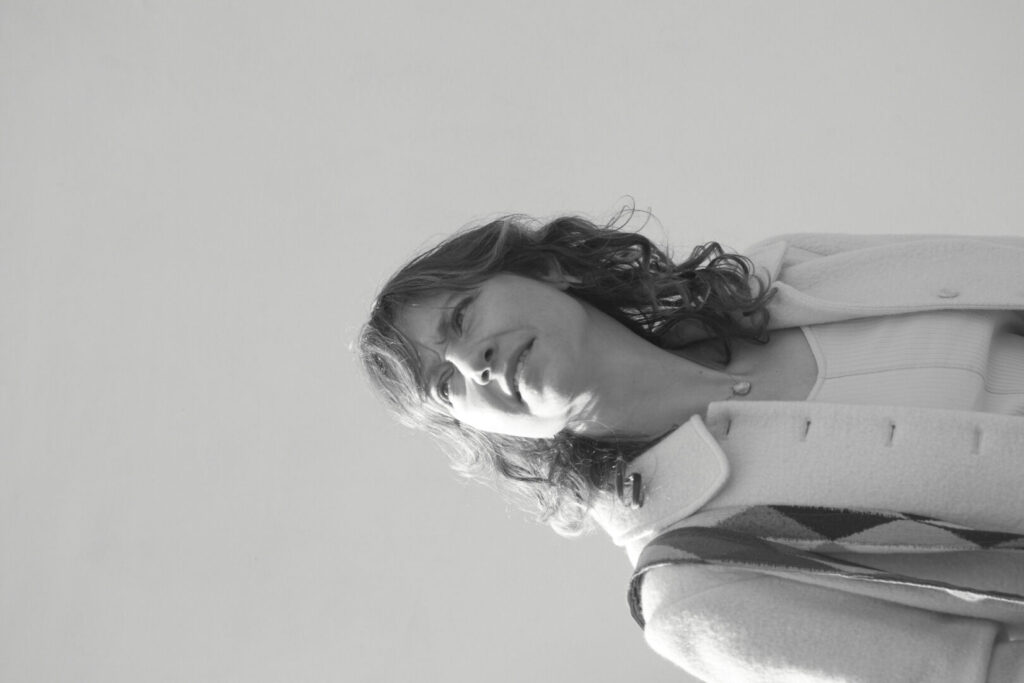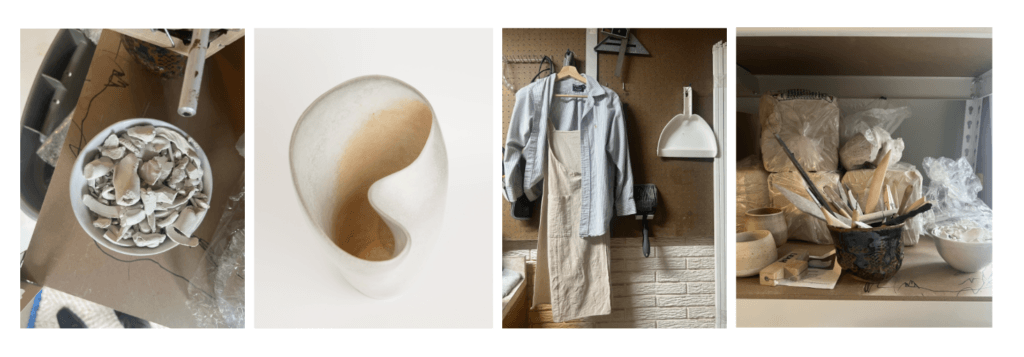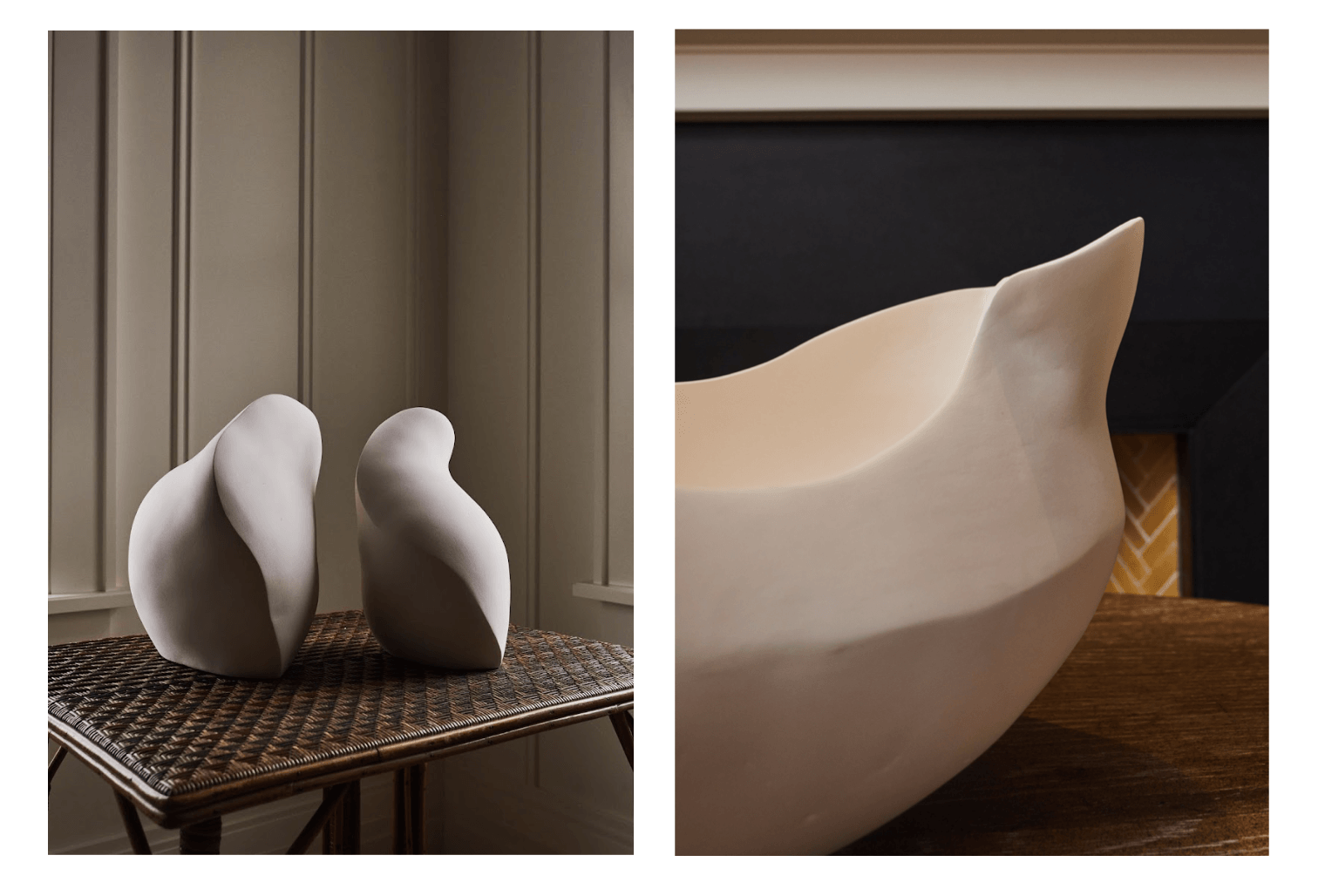An interview originally featured in MATCHBOOK, the editorial extension of MIXD Gallery, Leah Pollock shares an insight to the direction of her work, where she finds calmness and meditation in her craft, and her contributions in Drop 005.

Leah Pollock is a ceramicist whose practice is heavily informed by a creative process of seeking zen, or serenity, which she finds in open spaces and trails. As seen in her work, she lends this process or orchestration to her viewers, offering an essence felt as stillness.
Her practice is also informed by her former studies of Japanese language and culture, historical ceramics, traditional theater and architecture. During her studies in Tokyo, she was a pupil of Koiichi Koyama, an accomplished Japanese potter under whom she developed Japanese throwing techniques. She conducted personal research studying traditional Japanese kilns and wares, traveling throughout Japan while she taught English in the time between her formal degrees—BA in ceramics and BFA in graphic design Truman State University in Kirksville, Missouri and MFA in ceramics at the University of Missouri. She has been a resident of Bella Vista, AR for the past two years and is setting up her studio and sculpture business, Studio Leah Pollock LLC.
In conversation with MIXD, Pollock shares an insight to the direction of her work, where she finds calmness and meditation in her craft, and her contributions to Drop 005.

MIXD: Can you share with us the inspiration behind your ceramic work, and how it relates to the concept of mind-body connection?
Leah Pollock: I found the inspiration for my aesthetic by asking myself what do I have to offer the world? What am I the expert on? In my early 20s I began running long distances on trails because of the headspace it provided me. In a flow state—moving in a natural landscape—I could access a calm, creative, other-worldly mentality. It is the closest place to “just being” I have experienced.
During this time imagery would appear in my mind about artworks that related to what I was seeing in front of me. When moving up and down on terrain, what I am seeing becomes blurred and distilled into simple lines and layers of thought. My mind is clear enough to ponder the metaphysical world. This entire process of running is paralleled when I am creating in the studio. In reflection, this is what my art is about: gifting these moments of zen to the viewer.

MIXD: Your artist statement mentions how you create vessels to communicate an ideal mind-body connection in the natural world. How does your relationship with nature influence the design and creation of these vessels?
LP: I am always searching to bring all aspects of my life into calmness. Being in nature is the ultimate calm. That is where these ideas can be felt. In breaks from making my art I can reflect on how a core value of my life is balanced, or knowing when parts of my existence need to ebb and flow.
I am always searching to bring all aspects of my life into calmness. Being in nature is the ultimate calm. That is where these ideas can be felt. In breaks from making my art I can reflect on how a core value of my life is balanced, or knowing when parts of my existence need to ebb and flow.
LEAH POLLOCK
MIXD: How do the tangible or symbolic elements of ‘Prism’ intersect with or influence your artistic practice? Can you share any personal connections you have?
LP: My work relies heavily on light to activate the subtle changes of form and fine layers of line work. Because the work is white and minimal, you must search for the shadows to find the detail. This was important to my original aesthetic of white work because white to me symbolizes silence, and the simplification of visual stimulus to promote a calmness of mind.
Prisms are also activated by light. They take on new meaning when light is introduced. They are not just a form, but a symbol that allows the viewer to ponder metaphysical, physics and other forms of magic. Clay starts out the same but is so very close to magic in that it can become anything. Multi-faceted. Prisms and artists must be.
Prisms are also activated by light. They take on new meaning when light is introduced. They are not just a form, but a symbol that allows the viewer to ponder metaphysical, physics and other forms of magic. Clay starts out the same but is so very close to magic in that it can become anything. Multi-faceted. Prisms and artists must be.
LEAH POLLOCK
***
Leah Pollock, a ceramics artist with a BA and BFA from Truman State University, immersed herself in Japanese culture during her undergraduate years, studying under accomplished potter Koiichi Koyama in Tokyo. After obtaining her MFA in Ceramics in 2015, she taught her craft in California and served as Operations Manager for The Potters’ Studio, successfully transitioning it to a non-profit during the Covid-19 period. Leah played a crucial role in the studio’s expansion, increasing its capacity to serve over 500 people and generating over $1.4 million in revenue. She pioneered BIPOC and Young Artist scholarships, granting 35 individuals free studio access and workshop attendance annually.
While in the Bay Area, a few of her projects included commissions to Michelin star restaurant Sons & Daughters, designing ceramic furniture in collaboration with West Elm for their Oakland hotel, as well as being featured in Architectural Digest. Pollock has now been a resident of Bella Vista, AR for the past two years and is setting up her studio and sculpture business.
To keep up with Leah and her studio and sculpture business, follow along with @studio_leahpollock on Instagram.